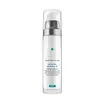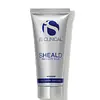What's inside
What's inside
 Key Ingredients
Key Ingredients

 Benefits
Benefits

 Concerns
Concerns

 Ingredients Side-by-side
Ingredients Side-by-side

Water
Skin ConditioningGlycerin
HumectantDimethicone
EmollientNiacinamide
SmoothingPropanediol
SolventDimethicone/PEG-10/15 Crosspolymer
Methylsilanol/Silicate Crosspolymer
Skin ConditioningSodium Chloride
MaskingPolymethylsilsesquioxane
Phenoxyethanol
PreservativeMicrocrystalline Cellulose
AbsorbentCI 77163
Cosmetic ColorantChlorphenesin
AntimicrobialCaprylyl Glycol
EmollientSodium Citrate
BufferingEthylhexyl Hydroxystearate
EmollientPEG-10 Dimethicone
Skin ConditioningDisodium EDTA
Cellulose Gum
Emulsion StabilisingLaminaria Digitata Extract
Skin ProtectingAdenosine
Skin ConditioningCitrus Aurantium Amara Flower Oil
MaskingMelaleuca Viridiflora Leaf Oil
Skin ConditioningTetradecyl Aminobutyroylvalylaminobutyric Urea Trifluoroacetate
Skin ConditioningLinalool
PerfumingCymbopogon Flexuosus Oil
MaskingCitral
PerfumingLimonene
PerfumingPelargonium Graveolens Flower Oil
MaskingWater, Glycerin, Dimethicone, Niacinamide, Propanediol, Dimethicone/PEG-10/15 Crosspolymer, Methylsilanol/Silicate Crosspolymer, Sodium Chloride, Polymethylsilsesquioxane, Phenoxyethanol, Microcrystalline Cellulose, CI 77163, Chlorphenesin, Caprylyl Glycol, Sodium Citrate, Ethylhexyl Hydroxystearate, PEG-10 Dimethicone, Disodium EDTA, Cellulose Gum, Laminaria Digitata Extract, Adenosine, Citrus Aurantium Amara Flower Oil, Melaleuca Viridiflora Leaf Oil, Tetradecyl Aminobutyroylvalylaminobutyric Urea Trifluoroacetate, Linalool, Cymbopogon Flexuosus Oil, Citral, Limonene, Pelargonium Graveolens Flower Oil
Water
Skin ConditioningSodium Hyaluronate
HumectantGlycerin
HumectantC12-15 Pareth-3 Benzoate
AntimicrobialPetrolatum
EmollientTocopherol
AntioxidantBeta-Glucan
Skin ConditioningCetearyl Alcohol
EmollientCeteareth-20
CleansingGlyceryl Stearate
EmollientPEG-100 Stearate
Piper Methysticum Leaf/Root/Stem Extract
Skin ConditioningAhnfeltia Concinna Extract
Skin ConditioningSorbitan Stearate
EmulsifyingPEG-8
HumectantPEG-8/Smdi Copolymer
Zea Mays Kernel Extract
Panthenol
Skin ConditioningCeramide NP
Skin ConditioningSodium Lauroyl Lactylate
EmulsifyingButylene Glycol
HumectantPolysorbate 20
EmulsifyingXanthan Gum
EmulsifyingCarbomer
Emulsion StabilisingRetinyl Palmitate
Skin ConditioningTriethanolamine
BufferingCeramide AP
Skin ConditioningCeramide EOP
Skin ConditioningCaprylyl Glycol
EmollientCholesterol
EmollientPhytosphingosine
Skin ConditioningAvena Sativa Kernel Extract
Abrasive1,2-Hexanediol
Skin ConditioningDisodium EDTA
Water, Sodium Hyaluronate, Glycerin, C12-15 Pareth-3 Benzoate, Petrolatum, Tocopherol, Beta-Glucan, Cetearyl Alcohol, Ceteareth-20, Glyceryl Stearate, PEG-100 Stearate, Piper Methysticum Leaf/Root/Stem Extract, Ahnfeltia Concinna Extract, Sorbitan Stearate, PEG-8, PEG-8/Smdi Copolymer, Zea Mays Kernel Extract, Panthenol, Ceramide NP, Sodium Lauroyl Lactylate, Butylene Glycol, Polysorbate 20, Xanthan Gum, Carbomer, Retinyl Palmitate, Triethanolamine, Ceramide AP, Ceramide EOP, Caprylyl Glycol, Cholesterol, Phytosphingosine, Avena Sativa Kernel Extract, 1,2-Hexanediol, Disodium EDTA
 Reviews
Reviews

Ingredients Explained
These ingredients are found in both products.
Ingredients higher up in an ingredient list are typically present in a larger amount.
Caprylyl Glycol is a humectant and emollient, meaning it attracts and preserves moisture.
It is a common ingredient in many products, especially those designed to hydrate skin. The primary benefits are retaining moisture, skin softening, and promoting a healthy skin barrier.
Though Caprylyl Glycol is an alcohol derived from fatty acids, it is not the kind that can dry out skin.
This ingredient is also used as a preservative to extend the life of products. It has slight antimicrobial properties.
Learn more about Caprylyl GlycolDisodium EDTA plays a role in making products more stable by aiding other preservatives.
It is a chelating agent, meaning it neutralizes metal ions that may be found in a product.
Disodium EDTA is a salt of edetic acid and is found to be safe in cosmetic ingredients.
Learn more about Disodium EDTAGlycerin is already naturally found in your skin. It helps moisturize and protect your skin.
A study from 2016 found glycerin to be more effective as a humectant than AHAs and hyaluronic acid.
As a humectant, it helps the skin stay hydrated by pulling moisture to your skin. The low molecular weight of glycerin allows it to pull moisture into the deeper layers of your skin.
Hydrated skin improves your skin barrier; Your skin barrier helps protect against irritants and bacteria.
Glycerin has also been found to have antimicrobial and antiviral properties. Due to these properties, glycerin is often used in wound and burn treatments.
In cosmetics, glycerin is usually derived from plants such as soybean or palm. However, it can also be sourced from animals, such as tallow or animal fat.
This ingredient is organic, colorless, odorless, and non-toxic.
Glycerin is the name for this ingredient in American English. British English uses Glycerol/Glycerine.
Learn more about GlycerinWater. It's the most common cosmetic ingredient of all. You'll usually see it at the top of ingredient lists, meaning that it makes up the largest part of the product.
So why is it so popular? Water most often acts as a solvent - this means that it helps dissolve other ingredients into the formulation.
You'll also recognize water as that liquid we all need to stay alive. If you see this, drink a glass of water. Stay hydrated!
Learn more about Water